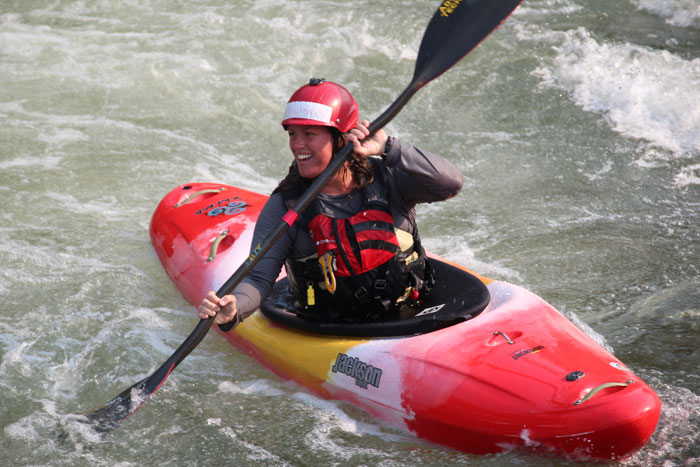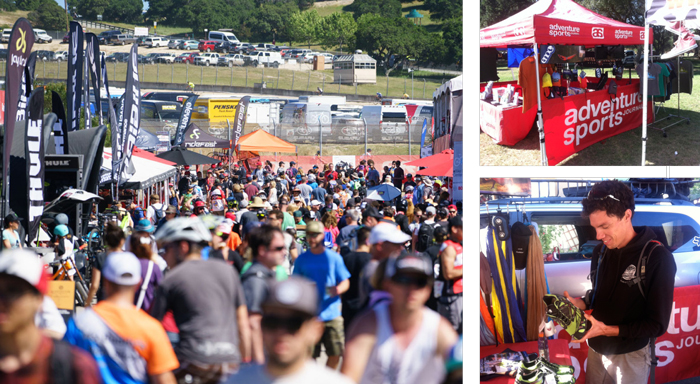- Paddling My Own Canoe - 10/01/2018
- West Coast Board Riders Club - 10/01/2018
- Never Too Oldfor Gold - 07/29/2018
Preventing paddlesport fatalities
By Haven Livingston

Fully equipped for adventure. Cali Collective guide Victoria Anweiller heads down the South Fork American River. Photo: Melissa DeMarie
In most cases, fatal paddlesport accidents are preventable. Period. This was reported by the National Safe Boating Council for the American Canoe Association report in 2002, and holds true today, for all types of paddlesports.
This past August, during a training paddle for the Columbia Gorge Paddle Challenge, Andres Pombo, 29, of Miami, drowned in the Columbia River after being blown off his standup paddle board by a gust of wind without a leash or life jacket. Heather Bonser-Bishop, 39, was standup paddling on the Chetco River in Oregon when her surf leash attached at the ankle caught on a submerged snag causing her to fall and be held under water. Jacob Austin, 52, and Mandi Walkley, 39, died after their sea kayaks overturned in rapidly deteriorating conditions near Sequim, Washington. The list could go on, but the point here is to motivate you to paddle safer, not depress you.
Accidents, by definition, are an unfortunate event resulting especially from carelessness or ignorance. In situations like those described above, they are not caused by a rogue event, instead, a series of poor decisions made by an individual or group eventually lead to a worst case scenario.
Pombo not only chose not to leave a leash and lifejacket behind, he also separated from his group in a new-to-him body of moving water. Though the stretch of water that Bonser-Bishop paddled on the Chetco River appeared unbroken on the surface, the leash she used was inappropriate for the swift currents. The group that set out on a calm afternoon for sea kayaking was experienced and wearing lifejackets, but they either did not check the forecast or thought they were skilled enough to deal with potential conditions.
Because the missing links to safety in these stories all seem obvious, you probably won’t guess the true first step to safety: judgment.
You can have all of the safety equipment and training in the world and it still won’t keep you out of harm’s way if you don’t know how to use it or, (gasp) choose not to. Safety starts with the way you think. So, how do you get the right combination of equipment, know-how and most importantly, decision-making?
The DIY approach is great if you’re refurbishing furniture. Starting a new adventure sport? Not so much. Don’t let your ego get in the way of something that could cost you your life. Take a professional course in your chosen sport. Not only will you start out safer, your learning curve will soar faster. Take a few classes, and then take a safety specific course for your sport. For river kayaking this would mean you take whitewater 101, 201, 301 and then a kayak specific swiftwater rescue class. These classes should teach you how to plan for and think your way through unexpected incidents in the simplest, safest manner while giving you an opportunity to practice in scenarios.
Exercise your judgment by following these key things any time you participate in a sport with a changing environment:
> Think through the whole process of your adventure start to finish.
> Research where you’re going and talk with people who know it and know your skill level to be sure it is within your abilities.
> Check conditions online and inquire about new locations from local experts. (Tip: the guy behind the counter may be selling SUP equipment, but may not actually be the best person to give advice: ask for an instructor or local paddle group leader.)
> Pick the right paddle buddies and stay together. They are your potential rescue team and vice versa! That means they’ve got their own set of safety equipment and are on board with the level of safety you want.
> Set your meeting point, but also know potential exit points.
> Equipment differs per sport, so don’t assume that your sailing lifejacket is good for kayaking or your surf leash is good for SUP river paddling. Learn what safety means for each sport and use it.
> Always pack an extra layer, food, water, and communication system. Consider the extra weight good training.
This may all sound extreme for just a little paddle down the river, but remember what the “three hour tour” turned into for Gilligan?













